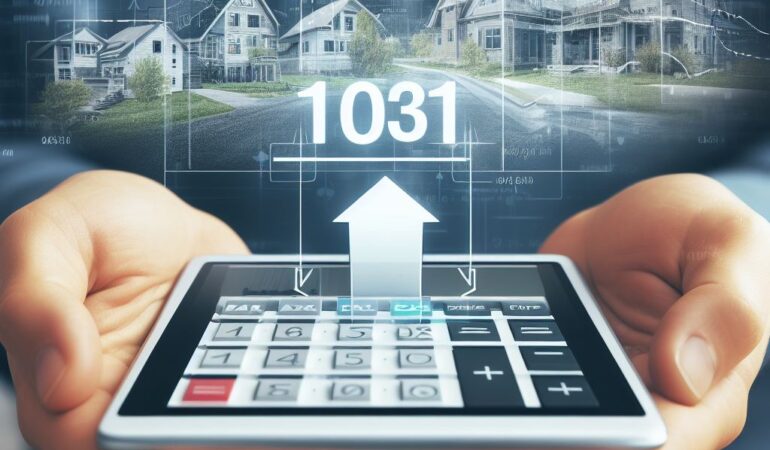Are you ready to delve into the intricate world of calculating depreciation recapture in a 1031 exchange?
Brace yourself for a precise and technical journey that will demystify the factors affecting depreciation recapture, teach you how to calculate the depreciation amount, and guide you in determining your tax liability.
With a focus on active strategies to minimize depreciation recapture, this article will equip you with the knowledge you need to navigate this complex aspect of real estate transactions.
Key Takeaways
- Depreciation recapture in a 1031 exchange involves the IRS requiring a portion of the claimed depreciation to be recaptured as ordinary income.
- To calculate depreciation recapture, subtract the adjusted cost basis from the total depreciation claimed.
- Factors such as depreciation method, length of time the property has been depreciated, and depreciation deductions taken during ownership can impact the amount of recaptured depreciation.
- Strategies such as monitoring property improvements, considering cost segregation studies, reinvesting in assets with shorter depreciation periods, and exploring Qualified Opportunity Zone investments can help minimize depreciation recapture in a 1031 exchange.
Understanding Depreciation Recapture
To understand depreciation recapture in a 1031 exchange, you need to be familiar with the concept of recapturing depreciation. Depreciation is an accounting method used to allocate the cost of an asset over its useful life. When you own a property, you can deduct a portion of its value each year as depreciation expenses. However, when you sell the property, the IRS requires you to recapture or pay back a portion of the depreciation you claimed.
In a 1031 exchange, which allows for the deferral of capital gains taxes when you sell a property and reinvest the proceeds into a like-kind property, depreciation recapture becomes a critical factor. When you exchange a property, the accumulated depreciation on the relinquished property is recaptured and treated as ordinary income. This means that you’ll be liable for the recaptured depreciation at your ordinary income tax rate.
To calculate the depreciation recapture in a 1031 exchange, you need to determine the accumulated depreciation on the relinquished property. This can be done by subtracting the adjusted cost basis of the property from the total depreciation claimed over the years. The resulting amount is then subject to ordinary income tax.
Understanding the concept of recapturing depreciation is vital in a 1031 exchange as it affects the tax implications of the transaction. By being aware of the potential depreciation recapture, you can make informed decisions and plan accordingly to minimize the tax consequences.
Factors Affecting Depreciation Recapture
When calculating depreciation recapture in a 1031 exchange, several factors can influence the amount of recaptured depreciation. It’s crucial to consider these factors to accurately determine the depreciation recapture amount. Here are the key factors that can affect depreciation recapture:
- Depreciation Method: The depreciation method used for the property will impact the amount of recaptured depreciation. The most common method is the Modified Accelerated Cost Recovery System (MACRS), which calculates depreciation based on the property’s useful life.
- Depreciation Period: The length of time the property has been depreciated will affect the recapture amount. The longer the property has been held, the higher the recaptured depreciation will be.
- Depreciation Deductions: Any depreciation deductions taken during the ownership of the property will reduce the recapture amount. These deductions will be subtracted from the total accumulated depreciation.
- Tax Rate: The tax rate applicable to the recaptured depreciation will also impact the final amount. The higher the tax rate, the more significant the tax liability will be.
By considering these factors, you can calculate the depreciation recapture amount accurately. Understanding how each factor contributes to the recapture amount is essential in making informed decisions during a 1031 exchange.
Now, let’s move on to discussing how to calculate the depreciation amount.
Calculating Depreciation Amount
Now, let’s delve into calculating the precise amount of depreciation in a 1031 exchange by taking into account the relevant factors discussed previously. Calculating the depreciation amount involves considering the initial cost of the property, the useful life of the property, and the depreciation method used.
To calculate the depreciation amount, you first need to determine the initial cost of the property. This includes the purchase price, closing costs, and any other expenses directly related to acquiring the property. It’s important to note that land isn’t depreciable, so the cost should be allocated between land and the building.
Next, you need to determine the useful life of the property. The IRS provides guidelines for different types of properties, such as residential or commercial buildings. The useful life is typically expressed in years and represents the estimated number of years the property will generate income before it becomes obsolete or no longer useful.
Once you have the initial cost and useful life, you can calculate the depreciation amount using the depreciation method chosen. The most commonly used method is the Modified Accelerated Cost Recovery System (MACRS), which allows for accelerated depreciation deductions over a specified recovery period.
Determining Tax Liability in a 1031 Exchange
Your tax liability in a 1031 exchange can be determined by calculating the amount of depreciation recapture. Depreciation recapture refers to the portion of the gain on the sale or exchange of a property that’s taxed as ordinary income. To determine your tax liability in a 1031 exchange, follow these steps:
- Calculate the amount of depreciation recapture: Start by determining the total accumulated depreciation taken on the property. This can be found in your tax records or by consulting with a tax professional. Multiply the accumulated depreciation by the depreciation recapture rate, which is currently set at 25%.
- Subtract the depreciation recapture from the total gain: Determine the total gain on the sale or exchange of the property by subtracting the property’s adjusted basis from the sales price. Then, subtract the amount of depreciation recapture calculated in step 1 from the total gain.
- Apply the applicable tax rate: The remaining gain after subtracting the depreciation recapture will be taxed at the applicable capital gains tax rate. The capital gains tax rates vary depending on your income level and the length of time you held the property.
- Calculate your tax liability: Multiply the remaining gain by the applicable capital gains tax rate to determine the amount of tax you’ll owe on the 1031 exchange.
Strategies to Minimize Depreciation Recapture
To effectively minimize depreciation recapture in a 1031 exchange, you should consistently and strategically manage your property investments. One strategy is to carefully monitor and document the improvements made to your property. By keeping accurate records of all capital expenditures and improvements, you can increase your cost basis and potentially reduce the amount of depreciation recapture.
Additionally, you may consider using a cost segregation study to allocate the cost of your property into different asset classes with varying depreciation schedules. This can allow you to accelerate the depreciation deductions for certain components of your property, thereby reducing the overall recapture amount.
Another strategy is to reinvest the proceeds from your property sale into assets with shorter depreciation periods. By investing in assets that have already undergone significant depreciation, you can minimize the potential recapture upon future sale.
Lastly, you may explore the option of using a Qualified Opportunity Zone (QOZ) investment. By investing your capital gains in a QOZ, you may be able to defer and potentially reduce the amount of depreciation recapture, while also benefiting from potential tax incentives and deferrals.
Frequently Asked Questions
What Are the Tax Implications if I Don’t Perform a 1031 Exchange and Instead Sell the Property Directly?
If you don’t perform a 1031 exchange and sell the property directly, you may be subject to tax implications such as depreciation recapture. It is important to consider these implications before making a decision.
Are There Any Specific Time Constraints or Deadlines Associated With Completing a 1031 Exchange?
To complete a 1031 exchange, you must identify replacement property within 45 days and close the transaction within 180 days. These time constraints are critical for deferring taxes on your property sale.
Can I Use a 1031 Exchange to Defer Depreciation Recapture on Multiple Properties?
Yes, you can use a 1031 exchange to defer depreciation recapture on multiple properties. This allows you to carry over the tax liability from the sale of one property to the purchase of another.
What Happens if I Can’t Find a Suitable Replacement Property Within the Designated Time Frame for a 1031 Exchange?
If you can’t find a suitable replacement property within the designated time frame for a 1031 exchange, you will not be able to defer the depreciation recapture. You may be subject to paying taxes on the recaptured depreciation amount.
Are There Any Exceptions or Special Rules for Depreciation Recapture in Certain Industries or Types of Properties?
In certain industries or property types, exceptions or special rules may apply to depreciation recapture. These unique circumstances can impact the calculation of depreciation recapture in a 1031 exchange.




